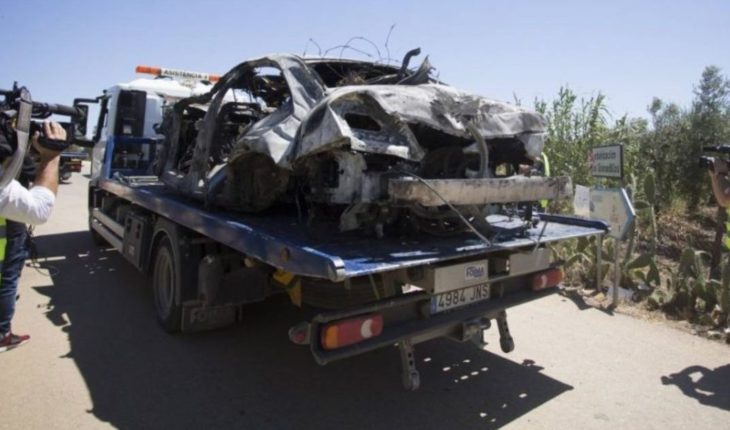The news moved everything with the one who crossed it. The death of Spanish footballer Jose Antonio Reyes impacted by the popularity of the character and because he was only 35 years old. And the skin is bristling to know that the cause of the death was a dismissal of the highway in a car that apparently traveled to more than 200 km/h. The result of the incident was the death of the Spanish footballer, his cousin Jonathan and the critical state in which he found another cousin Q The EU also traveled in the vehicle. Although the expertise has not yet been able to pinpoint the reason for the loss of control of the vehicle, the first versions of the Spanish media pointed to a tyre burst when the car that drove Reyes traveled to 237 km/h. The Spanish newspaper Marca said that It was a distraction that caused the vehicle to collide with the left barrier of the roadway, which caused the tyre to burst and the loss of control of the car, which crossed two lanes, hit the opposite barrier and caught fire. There are many readings that can be made about this incident, but they all end up showing that at more speed greater is the probability of losing control of the vehicle. Reyes ‘ car was built to be able to circulate at high speed. It was a model of Mercedes-Benz specially prepared by the company Brabus to yield at high speeds. It remains to know what the state of the tires was. Apparently Reyes had conductive experience or at least that is presumed by the collection of vehicles of great capacity and power that possessed; Among them, a Ferrari. But the speed has a decisive influence on the behavior of the vehicle. The first thing you do is modify the driver’s peripheral vision. At 40 km/h, who goes to the wheel has a field of view of 100 °. But as the field accelerates, it becomes more and more narrow. At 65 km/h is reduced to 70 °, at 100 km/h shrinks to 42 °, 130 km/h decreases to 30 ° and from 150 km/h generates a cone of visibility of only 18 °, generating what is known as “tunnel effect”. When that happens, the driver loses sharpness in the peripheral vision and, with that, the possibility to correctly evaluate distances and speeds, with a lower level of capture and evaluation in the decision processes of the information located in the margins of the field of vision.
Tunneling effect in the conduction. DGT
In addition, driving at high speeds constantly generates the emergence of psychophysical changes that enhance fatigue, increase the likelihood of distraction and appear emotional responses of stress and aggression in some subjects. The level of adherence of a vehicle depends on many factors but what affects most is the changes in trajectory. I mean, when you turn the wheel. When traveling at high speed, the adhesion limits are minimal. Therefore, any attempt at manoeuvre is very unlikely to be successful. On the other hand, braking distances increase considerably. If at 120 km/h it takes 90 meters to stop completely with a modern car, taking into account the reaction time. If you travel at 240 km/h, that distance will quadruples. It should be taken into account that at 200 km/h, 55 meters per second are travelled, so the reaction time is decisive for not stretching more distance. However, an impact at more than 200 km/h does not offer any chance of survival. Car structures are increasingly effective in obsorvering energy in the event of a collision, but not to withstand such energy. In such a case, the structure would collapse completely. And there are no airbags that can prevent damage, because the slowdown is so large that the organs can move and collide with other parts of the body, break some tissue or cause the rupture of a blood vessel. The only explanation that there is a survivor of the incident in which Reyes died and one of his cousins is simple because the car did not strike full against another obstacle. In this note:





